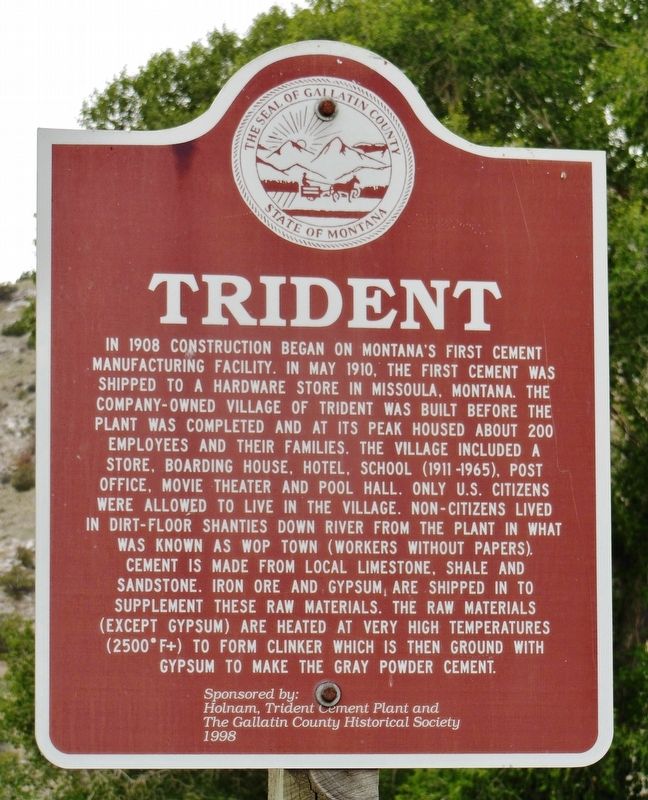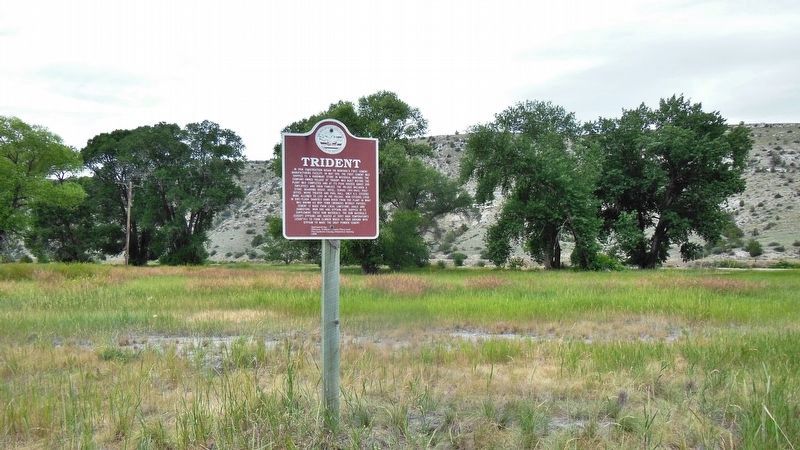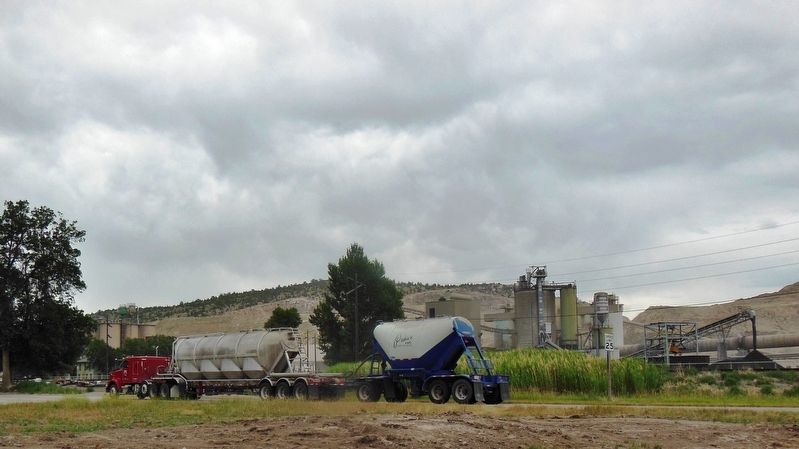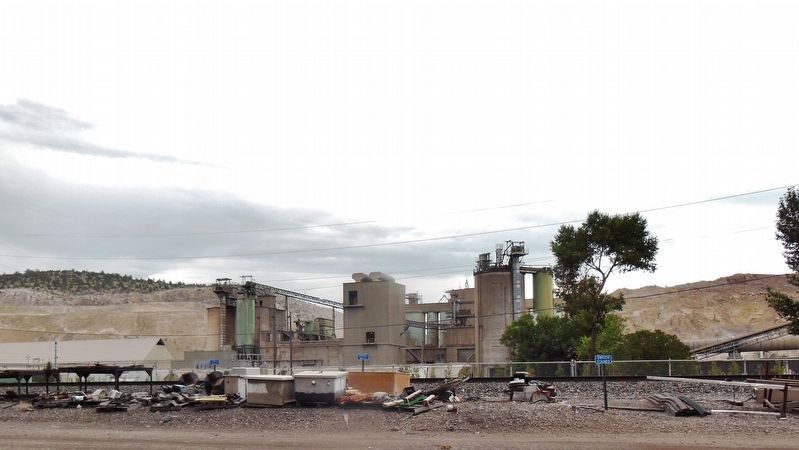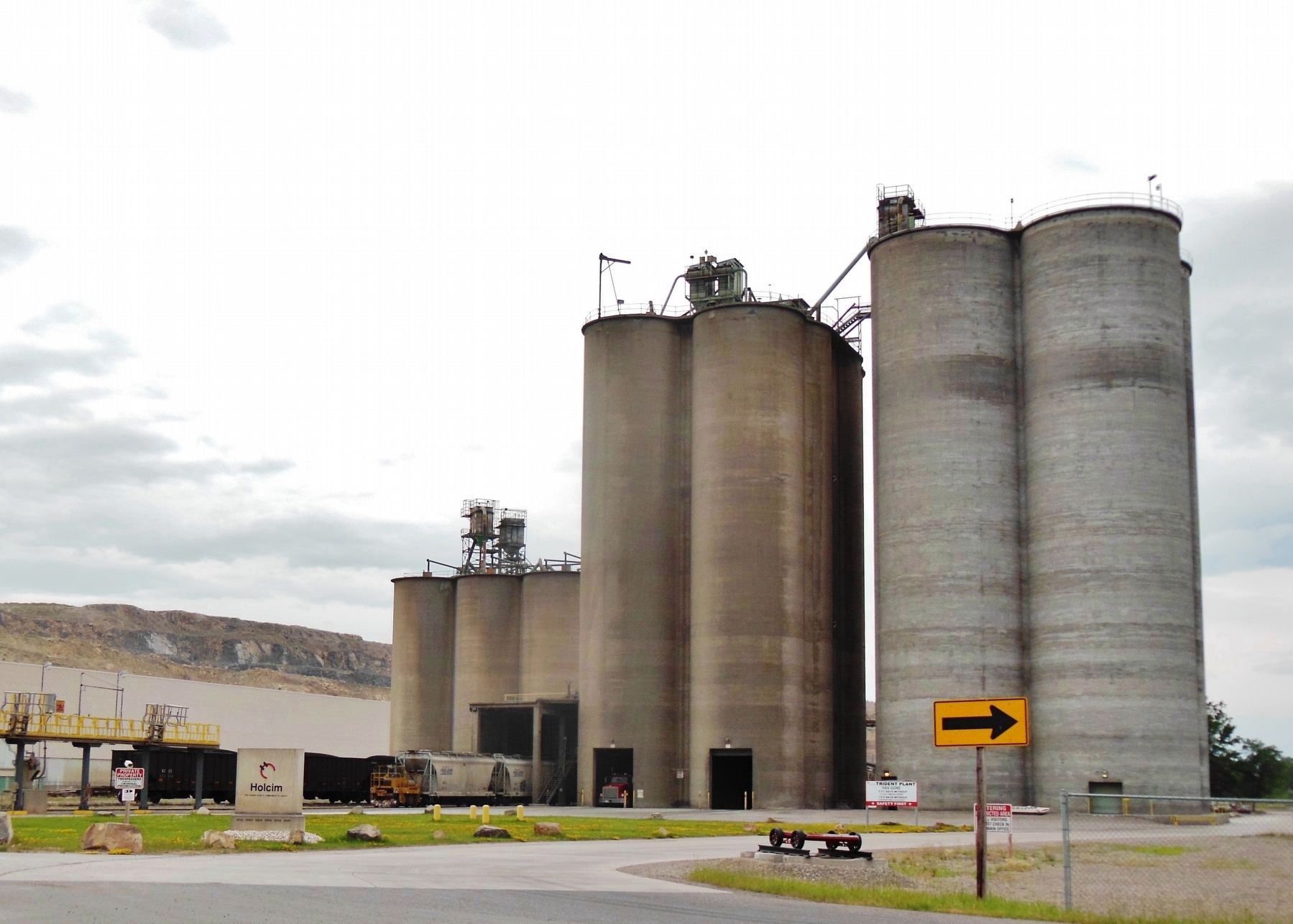Near Three Forks in Gallatin County, Montana — The American West (Mountains)
Trident
In 1908 construction began on Montana’s first cement manufacturing facility. In May 1910, the first cement was shipped to a hardware store in Missoula, Montana. The company-owned village of Trident was built before the plant was completed and at its peak housed about 200 employees and their families. The village included a store, boarding house, hotel, school (1911-1965), post office, movie theater and pool hall. Only U.S. citizens were allowed to live in the village. Non-citizens lived in dirt-floor shanties down river from the plant in what was known as WOP Town (workers without papers).
Cement is made from local limestone, shale and sandstone. Iron ore and gypsum are shipped in to supplement these raw materials. The raw materials (except gypsum) are heated at very high temperatures (2500 degrees F+) to form clinker which is then ground with gypsum to make the gray powder cement.
Erected 1998 by Holnam, Trident Cement Plant and the Gallatin County Historical Society.
Topics. This historical marker is listed in these topic lists: Industry & Commerce • Settlements & Settlers. A significant historical year for this entry is 1908.
Location. 45° 56.79′ N, 111° 28.73′ W. Marker is near Three Forks, Montana, in Gallatin County. Marker is on
Other nearby markers. At least 8 other markers are within 2 miles of this marker, measured as the crow flies. Roll of Honor (a few steps from this marker); The Upper Missouri (approx. ¾ mile away); Jefferson’s Instructions to Lewis and Clark (approx. 1.8 miles away); Lewis and Clark reach the Headwaters (approx. 1.8 miles away); The Naming of a River (approx. 1.8 miles away); Second Gallatin City (approx. 2.1 miles away); Colter’s Run (approx. 2.1 miles away); Gallatin City Hotel - 1868 (approx. 2.1 miles away). Touch for a list and map of all markers in Three Forks.
More about this marker. Marker is a large painted metal plaque mounted at eye-level on a wooden post.
Also see . . .
1. Trident, Montana. Construction of the Three Forks Portland Cement Co. plant began in 1908 with housing for the construction workers. With the number of men growing, a rail stop and post office were needed, which meant the place had to be named. "Portland" and "Cementville" were rejected and the village became known as Trident, since the name Three Forks was taken. The labor intensive industry required a lot of men, so in addition to the village, a shanty town sprang
up to the north of the original plant. At first, Japanese laborers were hired, but a union contract in 1911 restricted Japanese labor. Soon the shanty town was taken over by European immigrants, mostly Italian and Austrian.
In 2002, the facility was renamed, Holcim (US), Trident Plant, as its parent company reorganized. Between 1990 and 2008, the plant ran at near capacity, churning out cement products for the booming construction industry. (Submitted on December 3, 2018, by Cosmos Mariner of Cape Canaveral, Florida.)
2. Three Forks history buffs work to save Trident rail depot. Looking west from the Holcim Trident Cement Plant to the open field of tall cottonwoods framed by limestone cliffs and the Missouri River, it’s hard to imagine the village of Trident ever even existed there. Except for the plotted cottonwoods, the mine and train depot on the east side of the main road, nothing remains of the town today. But just a few generations ago Trident was a bustling community with over 2,500 residents living and working in and around the cement factory. There was a K-8 school, a hotel, bowling alley, pool hall, theater, and more. Now, the Three Forks Area Historical Society is working preserve the train depot and keep Trident’s history alive. (Submitted on December 3, 2018, by Cosmos Mariner of Cape Canaveral, Florida.)
Credits. This page was last revised on December 20, 2020. It was originally submitted on December 1, 2018, by Cosmos Mariner of Cape Canaveral, Florida. This page has been viewed 524 times since then and 55 times this year. Photos: 1, 2, 3, 4, 5. submitted on December 3, 2018, by Cosmos Mariner of Cape Canaveral, Florida. • Bill Pfingsten was the editor who published this page.
